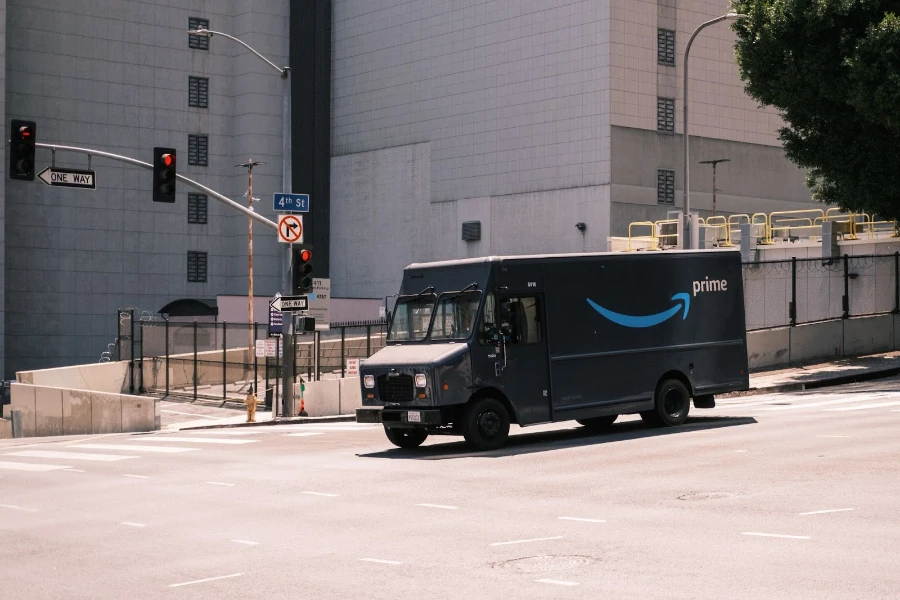It’s obvious by now that Amazon is a superb marketplace for selling products, and many self-made entrepreneurs and businesses have made a ton of profit just by selling their wares on the platform.
This behemoth of ecommerce is in both high demand by your average consumer as well as businesses looking to reach a larger audience.
Luckily for beginners, it isn’t complicated to learn how to sell on Amazon. In this step-by-step guide, we’ll teach you how to get the most out of your Amazon selling experience, hopefully boosting the chances of you making profit from your products.
Table of Contents
The business potential of Amazon
How to start selling on Amazon
Managing your Amazon business
Conclusion
The business potential of Amazon
Before getting into how to start selling on Amazon, you must first understand the significance of pursuing a venture on this massive, global platform.
Simply put, Amazon is an ecommerce company that provides a wide range of products in its catalog, such as electronics, digital products, household brands, and even local services like groceries. The scope is endless, and with the rising trend of ecommerce purchases, it isn’t going away any time soon.
According to Statista, in 2022, Amazon made almost US $514 billion in net sales revenue globally. Most of this revenue was generated through the sale of various retail products as well as from third-party sellers and media subscriptions like AWS cloud services.
Amazon’s brand value alone – even as understood by complete retail beginners – should be enough to convince you that selling on the platform is worth it.
How to start selling on Amazon
As you might expect, starting out is super easy. It only takes five steps to get started with selling on Amazon. In order to thrive on the platform, however, you should aim to fully commit to each.
Pick your niche and research
The first step is an important planning phase for any Amazon seller: picking a profitable niche and doing your research. It might be easy to jump onto Amazon and start selling anything, but doing so can lead to complications, including getting bogged down in the work of marketing your various products.
Therefore, it is suggested that beginners focus on one particular – ideally profitable – niche that can then provide a foundation for you to thrive as a major seller in that market. For instance, some examples of niches may include selling skincare products for women, selling suits for men, or selling ergonomic chairs for gamers, etc.
Once you have identified and picked a profitable niche that you are passionate about, do your market research. First, discover what products are selling well and are in high demand by the target market. An excellent way to do that is by researching trending keywords online and reading up on product trends. This can give a good indication of which products are in high demand at any given point in time or what might become popular in the near future. Favored keyword research tools include Google’s Keyword Planner, Moz, HubSpot, and Ahrefs.
After that, understand who your competitors are by browsing Amazon for similar items, checking the prices and gaining an understanding of the demand by monitoring sales.
Find suppliers, and place orders

The second step is to find the right suppliers. There are many ways to find product suppliers online, however, one preferred way is to find reliable suppliers on platforms such as Alibaba.com. For example, Alibaba.com marks experienced manufacturers as Verified Suppliers, and simplifies the way buyers can connect with suppliers to purchase various products wholesale. Moreover, reduce-priced products can help sellers improve their profit margins when reselling on Amazon.
When contacting suppliers on platforms like Alibaba.com, make sure to inquire about the price, minimum order quantity, order limit, product quality, shipping charges, etc. Moreover, understand whether they are certified, what type of raw materials they use, and their production line process to understand more about the product quality.
Then, simply place an order. If you’re not pressed for time, start off with a test order, which can help you accrue insightful feedback from customers to know whether the product is worth selling in the long run.
Choose the fulfillment model

The next step is to select the right order fulfillment model. Sellers can choose two options: fulfillment by merchant or fulfillment by Amazon (FBA).
Fulfillment by merchant involves the seller managing the entire sourcing process, from the inventory to shipping the products. On the other hand, Amazon FBA means that Amazon takes responsibility for packaging and shipping the products to consumers.
Both fulfillment models have their pros and cons, and which is best for you will depend on your specific business goals. For instance, merchant fulfillment provides more seller control over inventory and shipping. In addition, Amazon Prime customers get free delivery.
Whereas FBA provides more room for the seller to grow their business as Amazon takes care of all the complex work of fulfilling customers’ orders. Hence, the right option will depend on what you hope to achieve as a seller and whether the model suits your long-term goals.
Understand the selling costs
Another important step is to understand the selling costs involved when selling on Amazon. Apart from obvious costs, such as placing orders from suppliers, there are other costs involved in Amazon that sellers should be aware of in order to maximize their profitability.
Here are some notable fees that one should consider before selling on Amazon:
Subscription fees: When registering as a seller on Amazon, you must choose a specific plan. An individual seller’s plan costs about US $0.99 per unit sold, whereas a professional selling plan costs about US $39.99 per month.
Selling fees: There are also fees charged per unit sold. This includes referral fees, which are a percentage of the selling price and can vary depending on the product category.
Shipping fees: When the seller opts to fulfill orders by themselves, Amazon will apply shipping charges. These can vary depending on the product category and the method of shipping opted for by the customer.
FBA fees: When the seller opts for FBA, they’ll also need to cover FBA fees associated with storage, order fulfillment, and other additional services by Amazon.
The four aspects above should provide sellers some insight to how they should price products on Amazon. Moreover, you should consider other calculations, such as estimated earnings after these Amazon-related fees have been factored in, to determine your average sale price. Of course, other factors such as salaries and taxes will have to be incorporated to get the full sales picture.
Register an Amazon account and start listing products
The fifth and final step is to register on Amazon and start listing products. If you only require a limited, low-risk account to sell fewer than 40 units per month, then the individual plan will suffice. However, if you want to scale your business and sell more than 40 units, as well as gain access to Amazon’s selling tools, then the professional plan is recommended.
Information that you’ll need on hand to register as a seller on Amazon include:
- Contact number
- Tax information
- Bank account details
- Credit card details
- Being situated in a country that is eligible for being an Amazon seller
After registering, you’ll get access to Seller Central, Amazon’s dedicated selling and tracking dashboard.
Then it’s simply time to start listing. Essential details that will need to go into a product listing include:
- Product title
- Product description
- Product images
- Stock keeping unit (SKU)
- Keyword search terms
Once the product listing is online, it’s only a matter of waiting for your first sale!
Managing your Amazon business
Those first sales are likely to further motivate and encourage you to build scalable growth on the platform. Managing a business on Amazon is a long-term process, and one which is easier to succeed in by following tips:
Keep track of your progress
In any business, it is crucial to keep track of your progress and to monitor essential details such as performance metrics. These may include everything from average selling price and order fulfillment success rate to order cancel rate, etc.
Learn and understand which parts of your Amazon business are working so that you can improve areas that may be lacking. In addition, work to build a collection of positive customer reviews, which will help to attract more sales in the future.
To avoid negative reviews, always look to sell the highest-quality products that you can and ensure that orders are fulfilled quickly and conveniently. It goes without saying, but do not be tempted to add fake reviews as this goes against Amazon’s seller account terms and your account may be banned.
Optimize for growth
Always look to optimize growth and find opportunities to scale the business on Amazon. Focus on key areas such as marketing products via paid advertising and promoting content online on social media to get exposure.
Moreover, take it a step further and sell globally to a huge audience by enrolling with Amazon Global Selling, which gives you access to Amazon’s global markets.
Depending on results, you may even consider transitioning from a B2C model (which is what Amazon sellers predominantly focus on) to a B2B seller, helping you to target profitable businesses and get a larger piece of the pie.
Staying ahead of the competition is important, so you should aim to optimize your marketing strategy by promoting more insightful content about your newest products online and leverage analytics to identify market trends and new customer preferences.
Business protection
Another important point is to get business protection from competitors. This means registering for a trademark, helping to protect your brand and build trust with customers.
Conclusion
Amazon is a great ecommerce marketplace for beginners to start out and grow their business. However, to thrive in such a competitive marketplace, you must first source quality, well-priced products from reliable suppliers – like those found on Alibaba.com – in order to increase profit margins.



